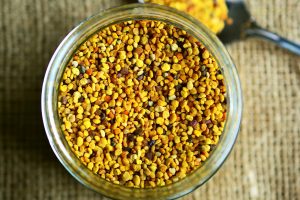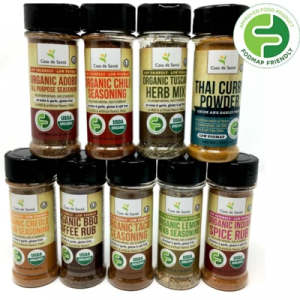Get ready to experience a volume of information of the healthiest foods in the world. Here is a list of the top ten super foods that most health experts agree on. You should tell everyone you know about these foods and enjoy them at your next meal. From fruits and vegetables, to whole grains, nuts, beans and legumes, this power-packed nutritional inventory will take you into the best years of your life and beyond.
Fruits
1. Cantaloupe
Only a quarter of cantaloupe provides almost all the vitamin A needed in one day. Since the beta-carotene in a cantaloupe converts to vitamin A, you get both nutrients at once. These vision-strengthening nutrients may help reduce the risk of developing cataracts. Like an orange, cantaloupe is also an excellent source of vitamin C, which helps our immune system. It is also is a good source of vitamin B6, dietary fiber, folate, niacin, and potassium, which helps maintain good blood sugar levels and metabolism. This pale orange power fruit may help reduce our risk of heart disease, stroke, and cancer.
2. Blueberries
These mildly sweet (and sometimes tangy) berries offer a high capacity to destroy free radicals that can cause cancer. Low in calories, they offer antioxidant phytonutrients called anthocyanidins, which enhance the effects of vitamin C. These antioxidants may help prevent cataracts, glaucoma, varicose veins, hemorrhoids, peptic ulcers, heart disease and cancer.
Vegetables
3: Tomatoes
Tomatoes help us fight against heart disease and cancers such as colorectal, prostate, breast, endometrial, lung, and cancer of the pancreas. Tomatoes are also good sources of vitamin C, A, and K. In a 2004 study, it was found that tomato juice alone can help reduce blood clotting.
Fresh, organic tomatoes deliver three times as much of the cancer-fighting carotenoid lycopene. Even organic ketchup is better for you than regular ketchup! Look for tomato pastes and sauces that contain the whole tomato (including peels) because you will absorb 75% more lycopene and almost two times the amount of beta-carotene.
4: Sweet Potatoes
As an excellent source of vitamin A, C, and manganese, sweet potatoes are also a good source of copper, dietary fiber, vitamin B6, potassium and iron. Those who are smokers or prone to second- hand smoke may benefit greatly from this root vegetable that helps protect us against emphysema.
For a unique dessert, cube a cooked sweet potato and slice a banana. Then lightly pour maple syrup over the top and add a dash or two of cinnamon. Add chopped walnuts for an even healthier kick.
5: Spinach and Kale
A cancer-fighter and cardio-helper, spinach and kale top the list as far as green leafy vegetables are concerned. Much like broccoli, they provide an excellent source of vitamin A and C. Kale is a surprisingly good source of calcium at 25% per cup, boiled. Vitamin K is abundantly found in spinach as well, with almost 200% of the Daily Value available, to help reduce bone loss.
Whole Grains
6: Whole Grain Bread, Pasta and Brown Rice
Whether it’s bread or pasta, the first thing to check for when purchasing whole grain bread and pasta is to make sure it is 100% whole grain. Remember to check the list of ingredients on the package. For example, look for the exact phrase “whole wheat flour” as one of the first ingredients listed in whole wheat bread. If it’s not listed as such, then it’s not whole grain. Wheat bran is a cancer-fighting grain that also helps us regulate our bowel movements.
Brown rice is also a better choice than refined grain (white rice) for the same reason as choosing whole wheat bread. Whole wheat flour or brown rice that turns into white flour or white rice actually destroys between 50-90% of vitamin B3, vitamin B1, vitamin B6, manganese, phosphorus, iron, and all of the dietary fiber and essential fatty acids we need. Even when processed white flour or white rice is “enriched,” it is not in the same form as the original unprocessed kind. In fact, 11 nutrients are actually lost and are not replaced during the “enrichment” process!
Nuts
7: Walnuts
These nuts are packed with omega-3 fats, which is one of the “good” fats. A quarter cup of walnuts would take care of about 90% of the omega-3s needed in one day. Walnuts provide many health benefits including cardiovascular protection, better cognitive function, anti-inflammatory advantages relating to asthma, rheumatoid arthritis, and inflammatory skin diseases like eczema and psoriasis. They can even help against cancer and also support the immune system.
Beans and Legumes
8: Black Beans and Lentils
While black beans are a good source of fiber that can lower cholesterol, so are lentils. The high fiber content in both black beans and lentils helps to maintain blood sugar levels. Also a fat-free, high quality protein with additional minerals and B-vitamins, black beans and lentils fill you up and don’t expand your waistline.
A complete, one-stop source of using a variety of beans and lentils comes easy when you can find a bag of 15-bean mix (includes black beans, lentils, navy, pinto, red, kidney, etc.) at the grocery store. Consider making a delicious soup with the addition of tomatoes, onions, garlic and your favorite spices with this bean mixture.
Dairy
9: Skim Milk and Yogurt
Skim milk (or low-fat) helps to promote strong bones, offering an excellent source of calcium, vitamin D, and vitamin K. These nutrients help protect colon cells from cancer-causing chemicals, bone loss, migraine headaches, premenstrual symptoms, and childhood obesity. Recent studies also show that overweight adults lose weight, especially around the midsection, when consuming low-fat dairy such as skim milk and yogurt.
Yogurt also includes the essential nutrients such as phosphorous and vitamin B2, vitamin B12, vitamin B5, zinc, potassium, and protein. Yogurt’s live bacterial cultures also provide a wealth of health benefits that may help us live longer and strengthen our immune system.
Seafood
10: Salmon
Salmon is high in protein, low in saturated fat and high in omega-3 fats (the essential fatty acids that are also found in those walnuts mentioned earlier). Salmon is a heart-healthy food and is recommended to eat at least twice a week. When choosing salmon, it’s best to stay away from farm raised and select wild instead. Research studies show that farmed salmon may cause cancer because it may carry high levels of carcinogenic chemicals known as polychlorinated biphenyls (PCBs).
Other
Green Tea and “Power” Water
Although not food per say, the health benefits of these beverages are worthy of mentioning.
Green tea has beneficial phytonutrients and lower levels of caffeine than all other teas. The more research studying green tea, the more health benefits are found. A cancer fighter as well, green tea has antioxidant effects that lower risks of bacterial or viral infections to cardiovascular disease, cancer, stroke, periodontal disease, and osteoporosis.
Water packed with vitamins and/or naturally sweetened fruit are also the newest trend. Some offer a full day’s supply of vitamin C while others promise no artificial sweeteners with a full, fruity taste.
As you can see, the top ten super foods are worth every bite (or sip). Now that you know which foods can help save your life, what’s more important than investing in your health?


